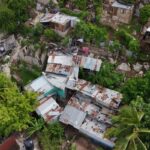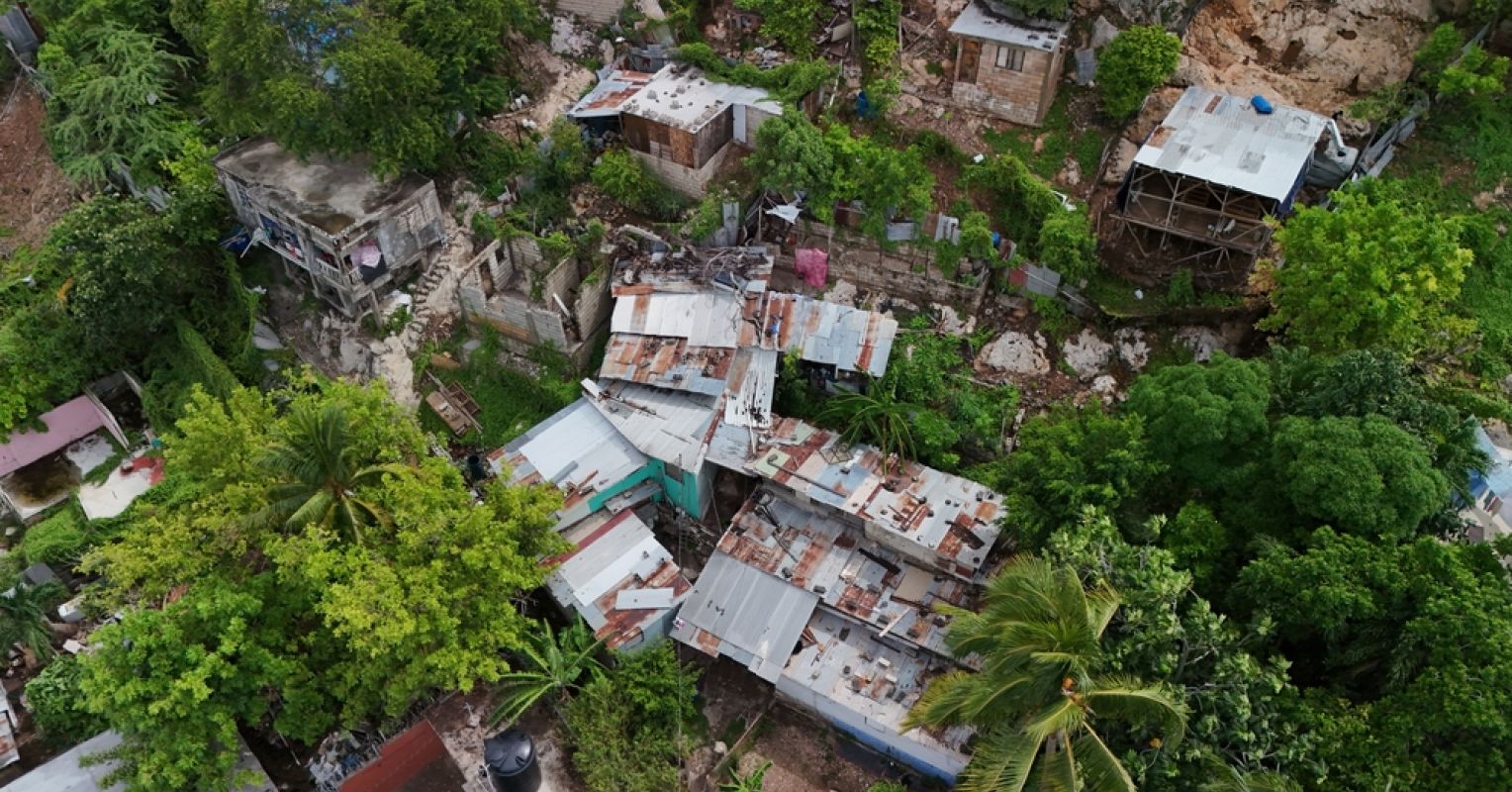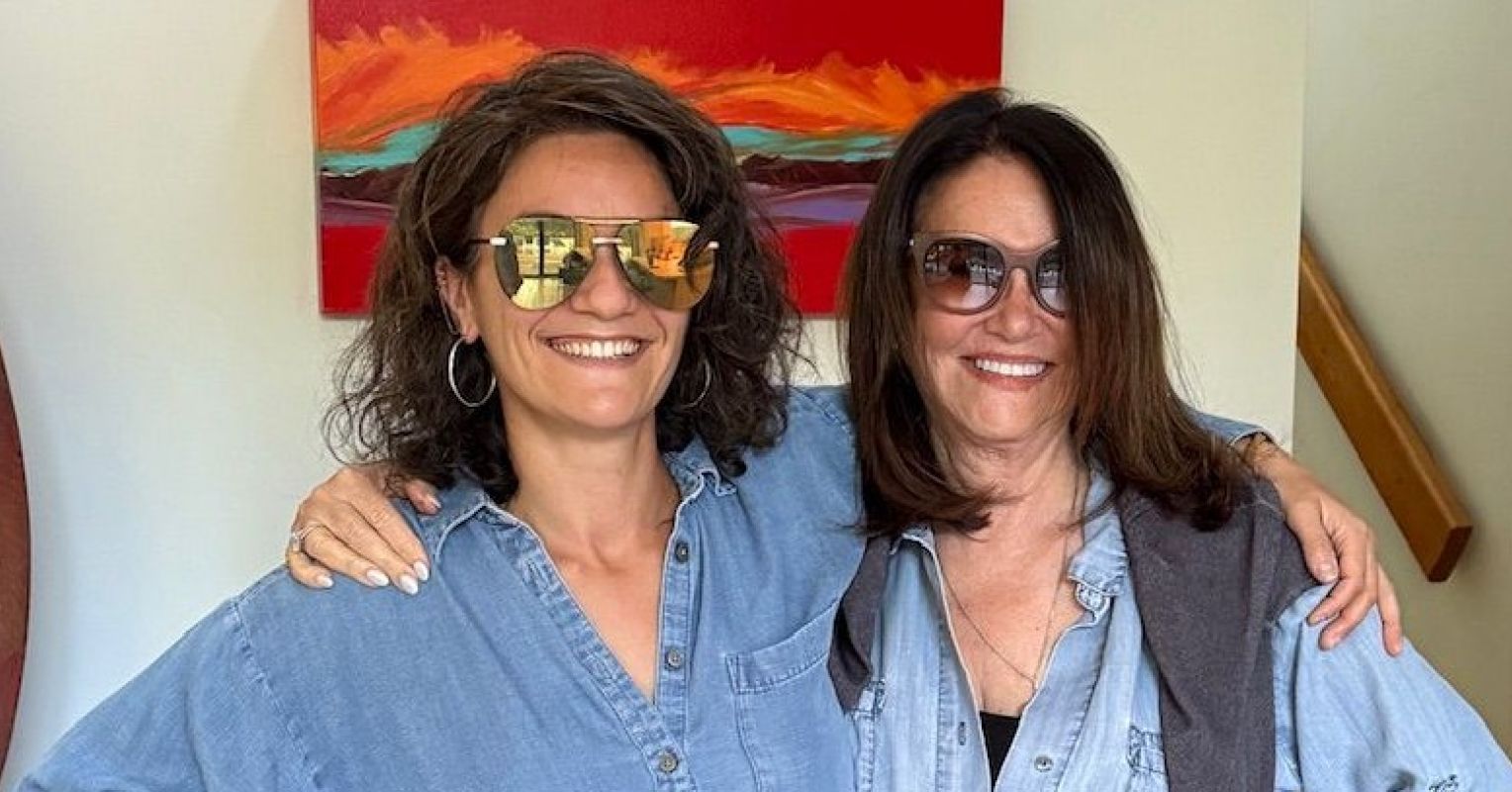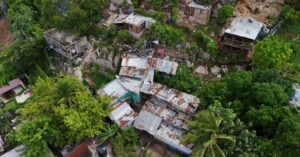He instructed Ani to pisi to wrap the world, with the people in it, in his web and let them down to the lower world. Ani to pisi did as he was told and let them down from the upper world through a hole. After the people were lowered from the upper world (spoomootsi) to here below, Ani to pisi explained to them that the web would remain with them so that the Creator would know when to help them. Whenever there is trouble or an emergency, one string of the web would vibrate and this would signal the Creator, who would come to help. Man was told to pattern his life after the web so that they can stay close together and help each other whenever there is a problem, anywhere on the web. When there is no trouble, the web would remain calm; otherwise, it would vibrate and everyone on the web would know and come to help with whatever the problem might be.
This is a condensed version of the Ani to pisi human spiderweb, a significant Blackfoot creation story passed down to Elder Roy Bear Chief by his late brother Clement. The story emphasizes the interconnectedness and interrelatedness of society, which is likened to the intricate web of a spider. Vibrations within this interconnected web symbolize a call to action to address problems and extend help when needed, as well as to gather for celebrations. By honoring and engaging with the Ani to pisi, individuals are invited to connect with the everyday vibrations that resonate within their lives, fostering connections with peers, family, community, and society at large.
Elder Roy Bear Chief, entrusted with sharing this sacred story, highlights its importance as a learning experience. To understand the true meaning behind the Ani to pisi narrative, we set out to create a Human Spiderweb at Mount Royal University in Canada with approximately 300 people. Afterward, participants talked about how impactful the experience was, so we decided to study it further—and found that the practice created an experience of awe.
Creating a Human Spiderweb
X

To create the spiderweb, we assigned participants a specific location on the web and had student volunteers guide them to their places when they arrived. Once everyone was in position, dignitaries including Elders, drummers, university administrators, and the person directing the movements stood at the center of the web. Through a microphone, they gave directions as to how the movements would unfold, then the event began. The drummers made one drum beat at a time, and the movement director signaled participants when to make vibration movements. After the vibrations, the drummers played a round dance song and everyone in the web joined in the round dance, which took up an entire soccer field.
Humans have a deep tendency to want to sync up with others around us. For instance, when babies see our facial expressions, they instinctively try to mimic them, and when someone smiles, we often smile back. When learning something new, we tend to imitate actions and gestures. This same desire to be in sync with one another happened during the enactment of the Human Spiderweb.
Although this was only a small pilot study, participants reported a sense of collective effervescence—the feeling of unity through simultaneous activity—and feeling awestruck.
People said they felt like they were in the presence of something greater than themselves: for example, “I felt like I was part of something important and impactful. I felt like I mattered in some way.” People shared what it was like to be in a shared experience, “the beating of the drums as we moved in unison, our motions guided each other to make the web happen.”
People also felt like time stood still and wanted the experience to keep going. This coincides with research suggesting that awe alters our sense of time, sometimes driving a desire to stay in the moment. We authors could attest to the fact that people lingered long after the event ended, and we watched people hugging and leaving the space with wide smiles.
People described getting teared up and their eyes widening. They also reported feeling inspiration, belonging, happiness, fulfillment, amazement, and powerful connection. One said they felt “remorse for how Indigenous peoples have been treated by assimilation and Westernizations. However, I felt a strong sense of community and hope for humanity.” Body sensations were described as goosebumps, heart pounding, tears that began with the beat of the drum and seeing everyone together. One person said, “I felt comfortable, I laughed, I felt connected to those around me, chills.” Another said, “My heart was so full and I could not stop smiling.”
The felt experience of being awestruck is an embodied experience. Comments about goosebumps, tearfulness, and heart pumping are all related to the bodily responses to an awesome experience. In addition, the comments about feeling hope for humanity—that, somehow, they mattered and barriers were broken down—say plenty about how immersed people were in the experience.
Beyond these benefits, participants also appreciated the opportunity to engage in a small act of reconciliation, honoring Indigenous history and knowledge. For example, they said, “Being part of this event was an opportunity to show my commitment to reconciliation,” and “I am committed to actioning on my treaty responsibilities as a second-generation racialized settler.”
The emotional experience of a spiderweb
The Human Spiderweb event, which encouraged group synchronicity, created profound social and emotional experiences for those involved.
Awe. According to researchers Dacher Keltner and Jonathan Haidt, awe involves a sense of vastness—something larger than the self—that challenges our typical frame of reference and changes our understanding of the world. We know we are experiencing awe when we feel amazed, transported, and inspired, realizing there are things out in the world far greater than ourselves.
While this recognition of smallness in the world could make us feel insignificant, it instead typically leads to humility and can trigger altruistic actions. There are also physiological effects; the body is implicated as we smile, eyes widen and shoulders lift, we breathe deeper, and these changes link to a shift in our autonomic nervous system. Our study found that participating in the Human Spiderweb brought about feelings of being awestruck through a collective experience.
For some of our participants, the emotional experience of being part of enacting Ani to pisi led to physical and emotional experiences that they had not anticipated. For example, one participant said, “It challenged my appreciation of what human beings are capable of.” This person may have experienced the vastness involved in being awestruck and the belongingness of collective effervescence.

Collective effervescence. According to a 2022 paper, collective effervescence exists when there is a shared emotional experience during a social gathering when people are united for a collective purpose, such as rituals, celebrations, and demonstrations. Such a gathering brings individuals closer together and creates an intimate experience. It takes them beyond their individualistic cares and concerns and elevates their social connections, because “participation in a collective gathering enhances participants’ sense of social belonging.”
As a 2021 paper explains, most people have a desire for belonging, which seems to be a human need that can be cultivated through collective experiences. Belonging “may be just as important as food, shelter, and physical safety.”
The emotions brought on via a collective experience are strong and positive. Collective experiences can create a shared identity and values, at least in that moment, as we co-participate with others. As researcher Shira Gabriel and her coauthors note, “collective bonds can affect well-being even when no relational bonds exist between members.” Even though many of the approximately 300 people who participated in the Human Spiderweb did not know one another, they shared a positive emotional experience.
Savoring. Six months after the Human Spiderweb, 90% of participants stated they could place themselves back in the event and describe the thoughts and feelings they had at the time. We take this as evidence of savoring.
We savor an experience by being present with a positive emotion—in this case, awe. Savoring also involves identifying the emotions we’re experiencing and spending time experiencing the sensations in our body related to the positive feelings. If we pay lots of attention to a positive experience in this way, we’re more likely to be able to remember it vividly and re-experience it later.
This event was like no other on our campus, which likely helped people savor it. Our campus has offered opportunities to participate in talks about Indigenous teachings and smaller group activities, but few involve physically enacting reconciliation principles. This was an opportunity to embody an Indigenous teaching taking place on the land of a treaty. The implications of what people were participating in became clear as the Elders spoke and the enactment began. Engaging in the round dance made everyone feel like they were part of something that had never been done before, and they knew it was special. As one participant stated, “The power of bringing people together for a common goal can’t be matched.”
Awe for the greater good
Being awestruck can boost our Mental health, and it is our hope that the Human Spiderweb experience will do so for our participants as they face challenges in the future. People need only think back to a savored experience to allow the emotional and physiological responses to surface once again, reminding people that they do belong and they do matter.
It is important for post-secondary institutions to offer students and faculty opportunities to engage in both individual and collective acts of reconciliation to demonstrate their commitment to the inclusion of Indigenous histories, cultures, languages, and knowledge. The participants in this pilot study emphasized hope for this event to be hosted annually, which would act as an ongoing demonstration versus a one-off event that can be considered performative. It is our hope that by reading this article, others will be inspired to create events such as this.
There are creation stories that have been told throughout history and are specific to particular cultures. Enacting your own creation story is possible if there is the will and commitment to reconciliation. We welcome dialogue about how to embody these commitments in ways that honor Indigenous ways of knowing. Since each nation potentially has different or variations of creation stories, following a template may not work. However, there are likely some common structures that you could follow. Talking these through with Indigenous leaders, as we did with Roy, and conceptualizing in new ways can be exciting, bring about an awe experience, and engage others to act on their own commitments to reconciliation.













